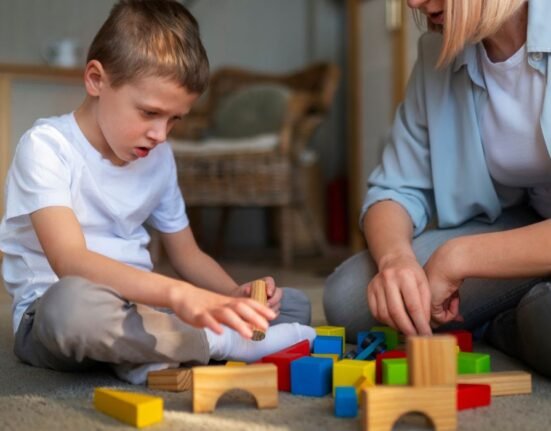Abuse of any kind is a very complex dynamic that can often be misinterpreted. One such misunderstanding might occur in the case of ‘reactive abuse.’ This kind of abuse usually happens when a person has been a victim for a prolonged period. After some incidents or periods, they may react in a way that might be interpreted as abuse. These reactions could include yelling, shouting, hitting, etc. While these actions are usually self-defensive from the victim’s point of view, it is easy for the abuser to paint themselves as the innocent one in this situation.
It is essential for the victim, professional, and other people to understand the depth of this reaction and take into account the context behind it. The abuser might use this single reaction to their advantage and portray the victim as the ‘crazy’ one in the relationship. It is a heightened emotional state that might occur after sustained victimization and ill intent of the abuser. For the moment, the reaction of the victim might seem aggressive, but there is a history behind that reaction that went unnoticed and unreacted for a long time. Accurate representation of these incidents is very crucial in situations like these. The professionals involved must be aware of the big picture.
The Cycle of Abuse
The abuse usually occurs in a cycle or pattern. This pattern might not be for the same amount of time every time the cycle is repeated. It may also vary for different cases. Psychologist Lenore Walker defined this cycle of abuse in her book titled ‘The Battered Women’ by conducting her research on heterosexual women who had abusive experiences. This cycle involves four stages.
Tension Building
In the first phase, tension builds as a response to external stressors. These stressors could be workplace stress, financial strain, frustration, etc. It builds feelings of anger and irritability within the abuser and a tense environment is created. They begin to develop an environment of criticism and intimidation around the victim.
During this time, the victim might sense this shift in their surroundings and try to tend to every need of the abuser and fear that they might ‘do something wrong’. They might also start to tiptoe or walk on eggshells around their abuser so as not to set them off due to any of their actions. They start putting in extra effort to diffuse the situation and make the abuser feel comfortable in their space.
Incident
In this phase, the tension finally catches up, and the abuser lashes out at the victim, resulting in an abusive episode. It is their way of gaining control over something. This type of abuse may involve emotional manipulation, sexual abuse, hitting, shouting, and attempts to control the victim’s activities and behaviours. Here, they might blame the victim for how they reacted and allege that the victim ‘provoked’ them. No circumstance can excuse abuse, no matter how serious.
Reconciliation
The tension created due to the incident eventually begins to fade, and the mood of the abuser also calms down after some time. Following the incident, the abuser starts to ask for forgiveness for their behaviour and tries to make amends for the things to go back to the way they were. To do so, they start showering the victim with gifts, praises, and loving gestures. It might make the victim feel that the incident was just a mistake and that their bond is stronger than ever. They manipulate the victim into forgiving them and going back to their normal life as if nothing ever happened.
The Calm
It is the period where it feels like everything has gone back to the way it was. Both parties seem to have made peace with the incident with some sort of explanation. The abuser might blame outside factors like excessive workload or financial problems for their actions, blame the victim for somehow evoking that response out of them, minimize the intensity of the incident, or simply deny that the incident ever took place.
The abuser assures the victim that this will never happen again, and the victim might believe them due to the genuineness of their words and actions. The victim might be convinced that it was a reaction to some outside stressor and that this would never happen again. This pattern rarely stops. The victim might consider the explanation of the abuser to be truthful, but after a while, the cycle repeats itself. If the abuse is stretched for a prolonged period, the calm period might get shorter over time. It might also totally disappear from the cycle since the abuser is now sure of the fact that the victim is not going to leave.
Reactive abuse typically takes place in the tension-building and incident phase of this pattern. The victims might try to save themselves or retaliate in some way. This illustrates the unequal power dynamics between the two parties. The abuser might now act as the victim alleging that they were attacked for no reason at all.
The Flight-or-Flight Response
The human body is often on the lookout for a threat and tries to eliminate the discomfort as soon as possible. One such method employed to do so is the fight-or-flight response. When the victim of abuse is subjected to a threat, their body reacts to it instinctively and feels the need to get out of the anxiety-provoking situation as soon as possible. The autonomic nervous system releases cortisol and epinephrine, which further diverts the energy to mobilizing in an emergency to avoid potential harm. This natural reaction to perceived stress includes
- Fight – This reaction involves the victim standing up to their abuser and trying to retaliate in some way. It could include hitting back, yelling, shouting, or other aggressive behaviours.
- Flight – This is one of the more sensible options if the abuser is physically bigger and stronger than the victim. The victim tries to escape from the situation whenever they get a chance and this escape could be physical or emotional.
- Freeze – This is a recently studied and added reaction in fight-or-flight response. The person becomes immobile when the threat presents itself. Their body is unable to respond to the situation and they become paralyzed. This reaction might be mistaken for acceptance or compliance by the victim.
The fight response here is considered reactive abuse. This is the reaction that involves the victim fighting back and acting aggressively towards the abuser. While the action of the abuser comes from a place of deliberately hurting the individual, the reaction of the victim is oriented towards survival mechanism rather than harming their abuser. They want the situation to diffuse in any way possible in a short interval of time.
Gaslighting and Reactive Abuse
Gaslighting can be defined as a type of psychological manipulation where the person being gaslighted might start to question their memory and reality. Through reactive abuse, the abuser gaslights the victim in a variety of ways.
- To shift the blame for the incident by making them think that it was they who initiated the incident.
- To undermine the victim’s sense of reality by making the person believe that they are ‘insane’ and that they need help.
- They may minimize the intensity of the incident or the victim’s concern by making them believe that they are ‘overreacting.’
- The perpetrator may attempt to deny that there has ever been any abuse and may claim that the victim is imagining it.
Psychological Impact of Reactive Abuse
- In such situations, the victims are caught in an abusive dynamic. The reactive abuse often leaves them with feelings of guilt, shame, and anxiety. Moreover, they feel extremely powerless and helpless after the incident.
- The victims might feel that they are just as guilty of abuse as their abuser for reacting this way.
- They may begin to doubt reality and their sense of self as a result of the abuser’s gaslighting.
- The victim might face life-long traumatic memories as a result of abuse and reactive abuse.
- They might hesitate to reach out for help as they might feel that people will judge them for staying in an abusive relationship for a long time, for reacting poorly, or for being unable to effectively manage the situation.
Getting Out Of It
Identifying and breaking this pattern of abuse is crucial to managing the psychological effects of reactive abuse on the victim. The following steps might be helpful
- The victim should talk to a close and trusted confidant and seek different perspectives on their situation. The validation from them can also help them to maintain their sense of self.
- The victim should establish and reinforce their boundaries and should clarify what they will and won’t accept and tolerate.
- Recognize that the victim’s intentions are different from those of the abuser. Reactive abuse was more of a defensive process than anything else.
- Reach out for professional help.
- Opt for legal help whenever necessary.
Conclusion
People usually say ‘Why didn’t you just get out of the relationship?’ to a victim of abuse very often. But, it is easier said than done. Abuse is a complex dynamic and breaking the cycle is even more complex. Reactive abuse is a very misunderstood term and is a form of survival instinct rather than a deliberate intent to harm. The victims should not feel guilty for their responses and should be helped to break free from this pattern.
FAQs
- Is reactive abuse specific to romantic relationships?
No. Any type of abusive relationship, including friendships, professional relationships, and familial relationships, can involve reactive abuse. A romantic relationship is one of those types of relationship where this type of abuse can take place.
- Can one heal after incidents of reactive abuse?
Yes. With the right treatment and support, a person can heal from abuse and reactive abuse. While this process takes time, consistency can help one to regain their confidence and sense of self-worth.
- How can actual abuse and reactive abuse be differentiated?
Abuse is a continuous pattern of controlling and manipulating behaviour and harming the victim. Reactive abuse, on the other hand, is a one-time reaction to prolonged abuse.
References +
- Gupta, S. (2023, August 10). Understanding Reactive Abuse: Signs and Solutions. Verywell Mind. https://www.verywellmind.com/reactive-abuse-signs-impact-and-tips-to-break-the-cycle-7567483
- Milosevic, I. (2015). Phobias. Google Books. https://books.google.com/books?hl=en&lr=&id=5hXHEAAAQBAJ&oi=fnd&pg=PA179&dq=fight+or+flight+response&ots=lUHM6UW012&sig=a0JTZ51UaEEuRaB2lYh0SIMLYAI
- Raypole, C. (2020, November 30). Cycle of Abuse: Understanding the 4 Parts. Healthline. https://www.healthline.com/health/relationships/cycle-of-abuse













Leave feedback about this